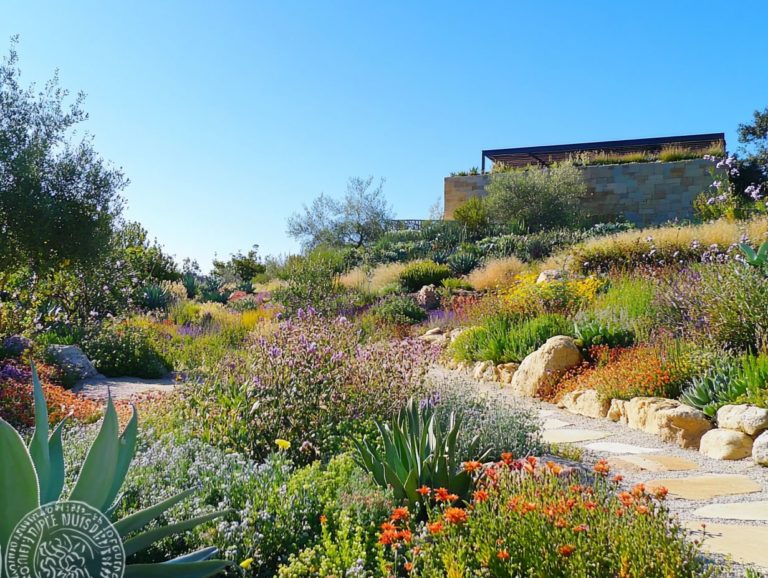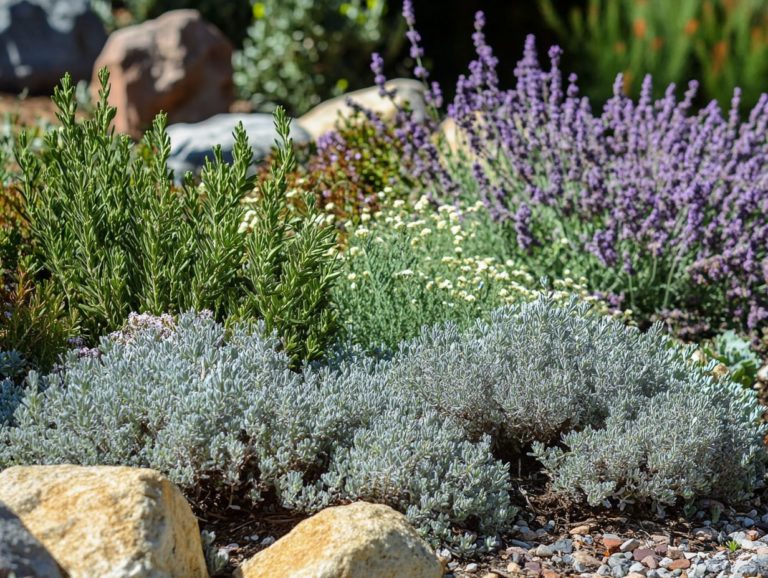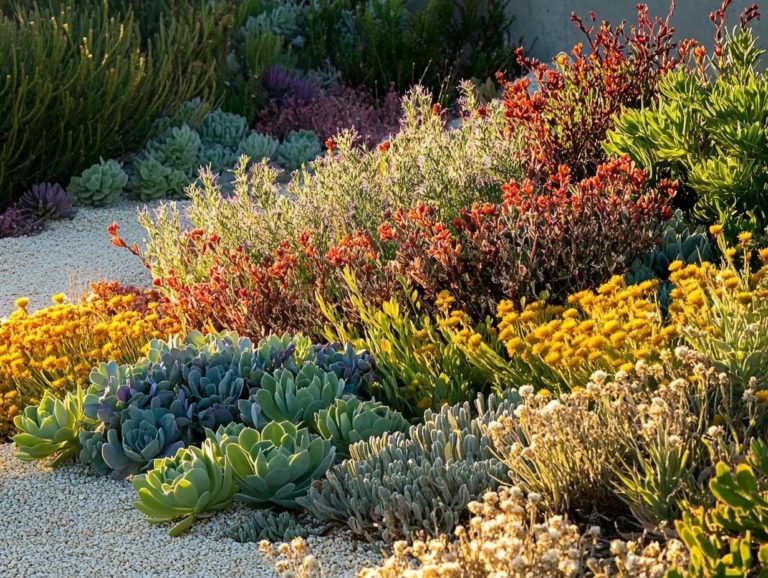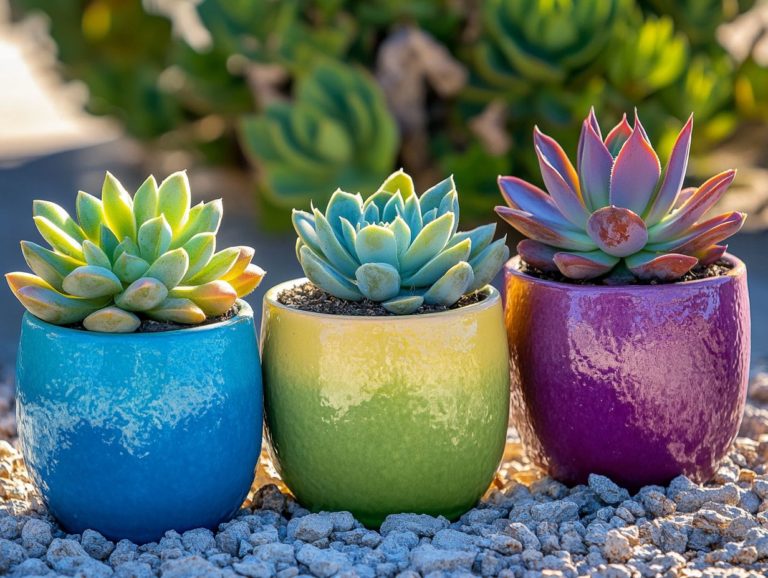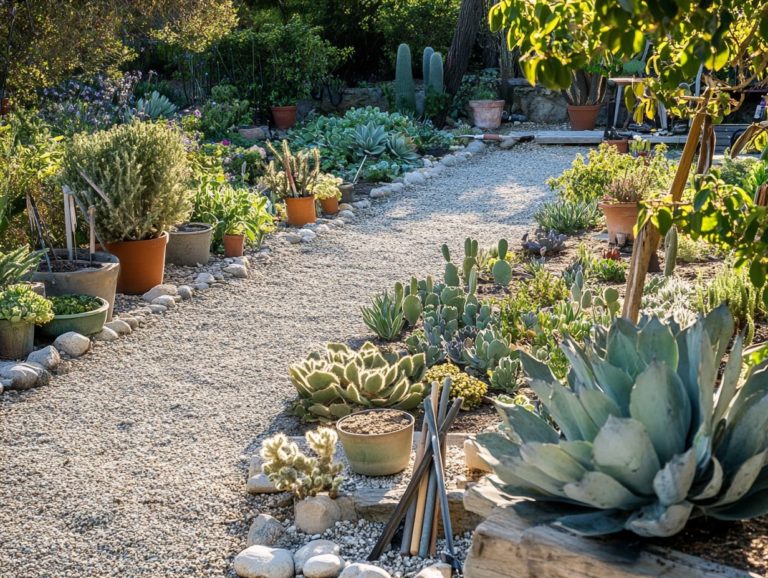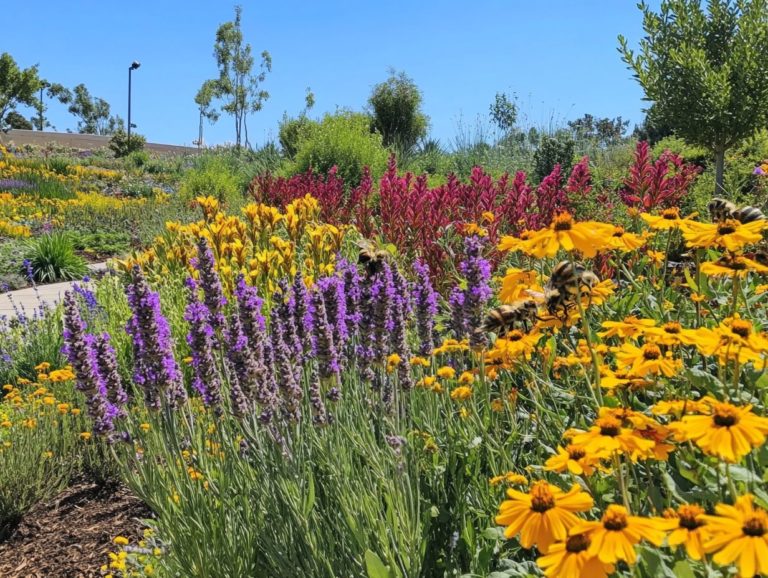Drought-Resistant Landscaping Ideas for Beginners
Water scarcity is a critical issue. Drought-resistant landscaping offers a sustainable solution that benefits both the environment and your budget.
This guide will delve into the essence of drought-resistant landscaping, illuminating its numerous advantages, from significant cost savings to positive environmental impacts. We will also explore the benefits of water conservation.
This guide will highlight common pitfalls to avoid, such as improper plant selection and ineffective irrigation methods. Immerse yourself in the journey to create a stunning, water-efficient outdoor space that truly reflects your commitment to sustainability!
Contents
- Key Takeaways:
- Understanding Drought-Resistant Landscaping
- Benefits of Drought-Resistant Landscaping
- Choosing the Right Plants for Drought-Resistant Landscaping
- Designing Your Drought-Resistant Landscape
- Maintenance and Care for Drought-Resistant Landscaping
- Common Mistakes to Avoid in Drought-Resistant Landscaping
- Frequently Asked Questions
- Drought-Resistant Landscaping: A Beginner s Guide
- Best Plants for Drought-Resistant Landscaping
- Tips for Designing a Drought-Resistant Landscape
- Reducing Water Usage in Your Drought-Resistant Landscape
- Are there any special maintenance requirements for a drought-resistant landscape?
- Can I still have a beautiful landscape with drought-resistant plants?
Key Takeaways:
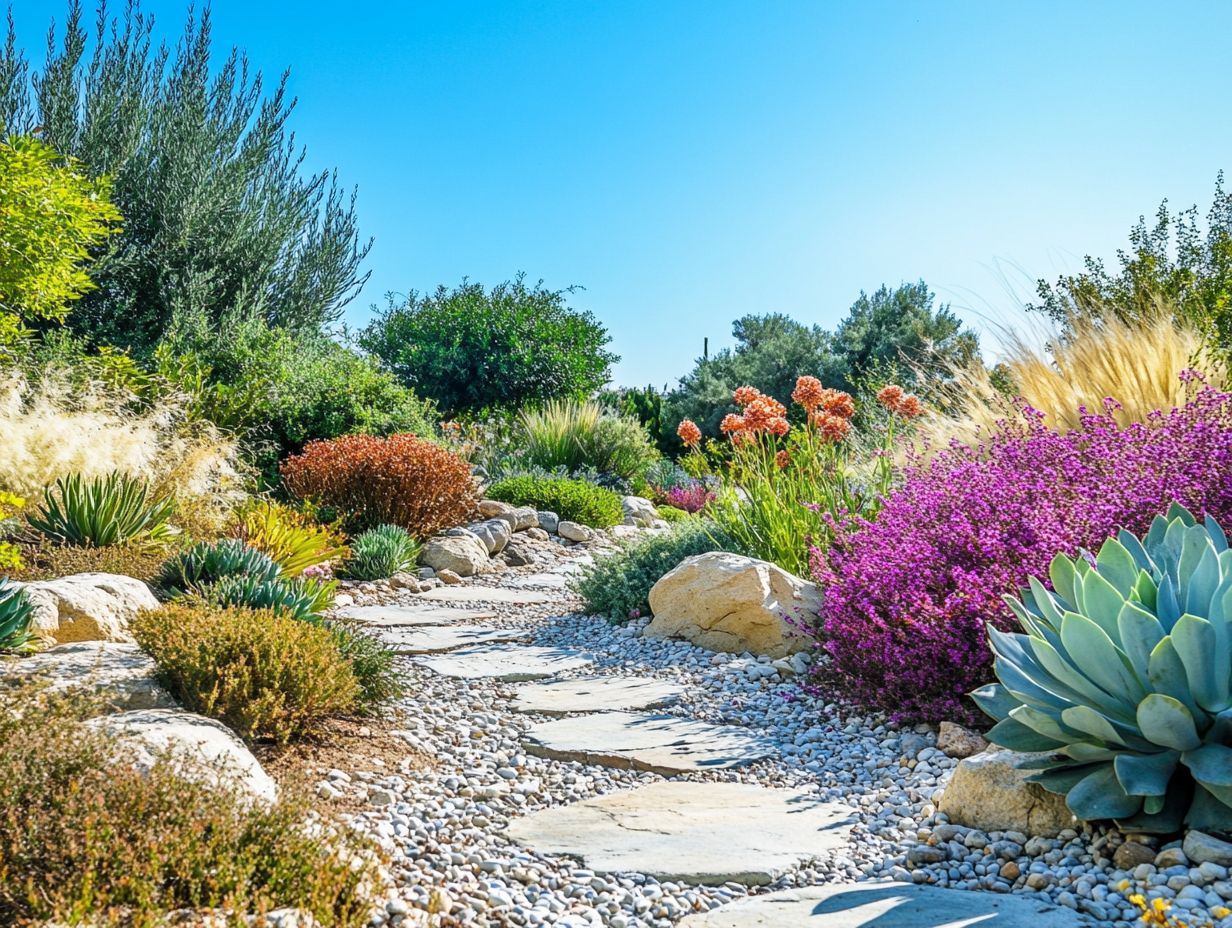
- Drought-resistant landscaping helps you save water and money!
- Careful plant selection and proper design are key to creating a successful drought-resistant landscape.
- Regular maintenance and avoiding common mistakes, such as overwatering and poor plant grouping, are essential for keeping your drought-resistant landscape thriving.
Understanding Drought-Resistant Landscaping
Understanding drought-resistant landscaping is essential for crafting sustainable outdoor spaces that address the pressing water conservation challenges intensified by climate change while promoting regional adaptation. By embracing xeriscaping and learning how to design a drought-tolerant landscape, you can incorporate drought-tolerant plants such as lavender and yucca, as well as native plants that demand minimal irrigation.
This approach reinforces your commitment to environmental responsibility and elevates the beauty of your garden. Reducing lawn areas encourages eco-friendly practices that enhance soil moisture retention and combat soil erosion.
What is Drought-Resistant Landscaping?
Drought-resistant landscaping focuses on the thoughtful selection and arrangement of water-wise plants that thrive in arid conditions, requiring minimal irrigation to maintain their health and stunning beauty. This approach aligns well with eco-friendly landscaping for drought conditions.
This approach highlights your commitment to creating a sustainable environment that conserves moisture while still offering colorful and vibrant outdoor spaces. By incorporating soil amendments that enhance moisture retention and utilizing efficient irrigation methods, you can significantly cut back on your water consumption while improving your landscape maintenance.
Choosing the right plant varieties is essential, as they should not only withstand dry conditions but also enrich local biodiversity. When you bring these elements together, such as ornamental grasses and groundcover plants, you create a cohesive strategy that enhances your landscape’s aesthetic appeal while positively contributing to the ecosystem by minimizing water waste and fostering resilient gardens.
Benefits of Drought-Resistant Landscaping
Drought-resistant landscaping presents a wealth of benefits, both for the environment and your wallet. It positions itself as a wise choice for homeowners eager to elevate their outdoor spaces while demonstrating responsible stewardship of water resources through establishing a drought-tolerant garden. This approach enhances the beauty of your surroundings and contributes to sustainable living.
Environmental and Cost Savings Benefits
The environmental and cost-saving benefits of drought-resistant landscaping are remarkable. It dramatically reduces water usage and lowers your maintenance costs over time.
By incorporating native plants and implementing sustainable irrigation techniques, you can significantly enhance water management in your garden. These methods improve soil moisture retention and reduce soil erosion, fostering a healthier ecosystem. Such eco-friendly practices help you conserve precious water resources while leading to long-term financial savings by minimizing the need for fertilizers and reducing the frequency of mowing.
Ultimately, embracing drought-resistant landscaping allows you to create a resilient environment that promotes biodiversity through plant selection. Enjoy a beautiful landscape without the stress of high maintenance expenses!
Ready to transform your outdoor space? Start your drought-resistant landscaping journey today!
Choosing the Right Plants for Drought-Resistant Landscaping
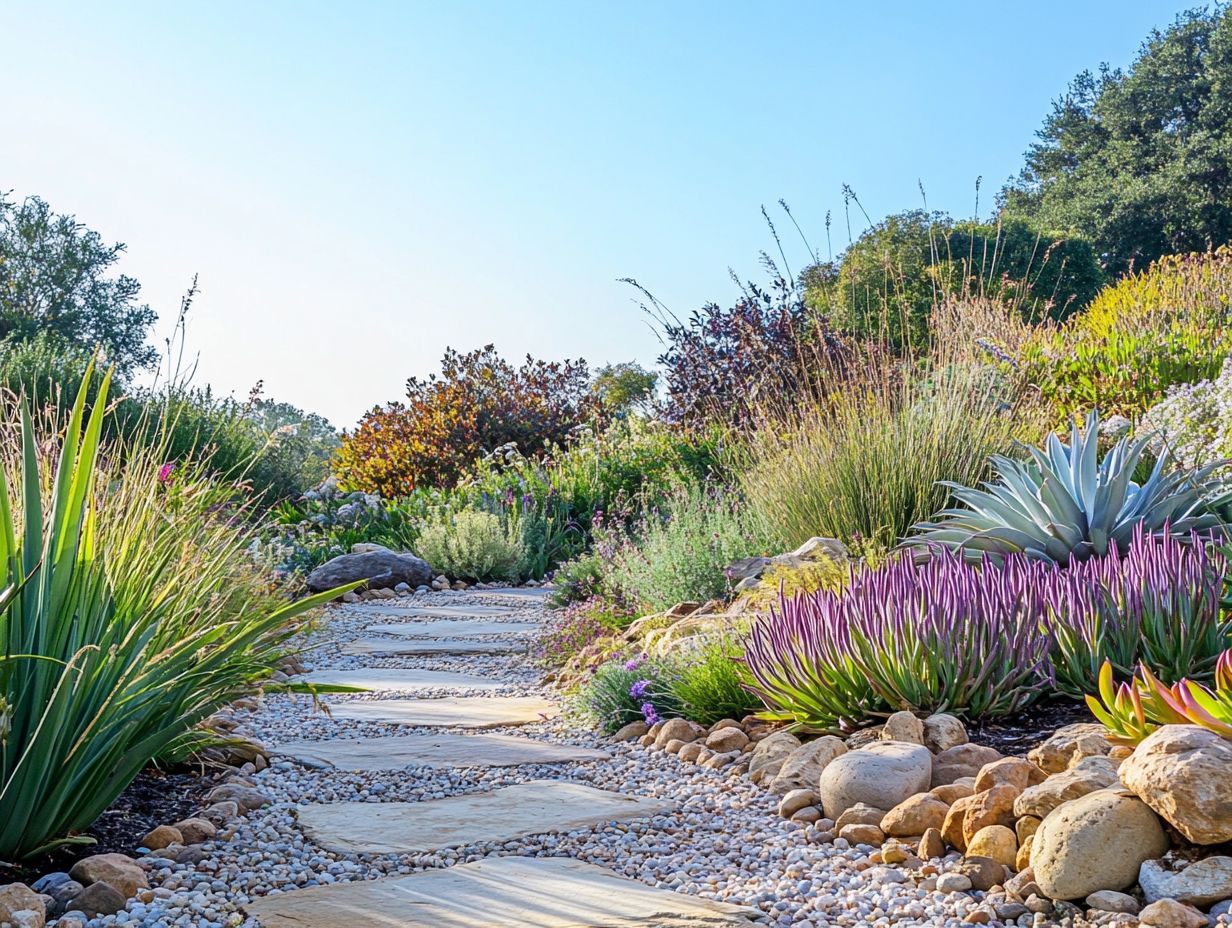
Selecting the right plants is crucial for achieving a successful drought-resistant garden. Careful selection of drought-tolerant varieties, resilient groundcovers, and native species like agave and cacti can significantly enhance the overall health and sustainability of your space.
Each choice you make plays a vital role in creating a flourishing outdoor area that thrives even in challenging conditions.
Types of Plants and Their Water Needs
Understanding the various types of plants and their unique water needs is essential for crafting a drought-resistant landscape. This includes succulents and ornamental grasses, as well as recognizing the role of drought-resistant plants in landscaping that optimize water use and champion sustainability.
Choosing the right plants can significantly reduce your water needs while enhancing the resilience of your garden spaces. Drought-tolerant plants like lavender and agave have evolved to thrive on minimal water, making them exemplary choices for any arid climate.
Native plants such as California poppy and yucca not only require less water but also support local ecosystems. When paired with efficient irrigation systems like drip lines, which deliver water directly to the roots of your plants, these species can thrive even during water scarcity. This thoughtful selection enhances both the aesthetic appeal and environmental responsibility of your gardening efforts.
Designing Your Drought-Resistant Landscape
Designing your drought-resistant landscape is a blend of thoughtful planning and creativity. Consider small space landscaping for drought areas to harmonize landscape features that enhance moisture retention with your plantings while maximizing moisture retention and elevating the overall design of your garden.
Key Elements and Tips for a Successful Design
Incorporating key elements and following essential garden tips can significantly elevate the success of your drought-resistant garden design. From selecting perfect landscape features to implementing effective irrigation systems like rain gardens, each choice is crucial.
If you’re aiming to cultivate a thriving garden in arid conditions, don’t overlook the importance of mulch for moisture conservation and temperature regulation. It s an invaluable ally, aiding in moisture retention while keeping those pesky weeds at bay.
Consider efficient irrigation systems, such as drip lines and rain gardens. These methods of watering plants deliver water directly to the roots, minimizing waste and ensuring that each plant receives the hydration it needs. By thoughtfully combining these elements, you can transform your outdoor space into a vibrant, sustainable environment that flourishes even during prolonged dry spells.
Maintenance and Care for Drought-Resistant Landscaping
Keeping your drought-resistant garden healthy is key to its longevity! Proper care is essential, especially in fluctuating drought conditions. Employ effective irrigation methods like strategic irrigation systems and adhere to best practices for garden maintenance.
- Choose drought-tolerant plants like succulents and native species.
- Use mulch for moisture conservation.
- Implement efficient irrigation systems.
- Monitor your garden’s water needs regularly.
- Pair plants with hardscape elements that enhance moisture retention.
Start planning your drought-resistant garden today and contribute to a sustainable future!
Best Practices for Keeping Your Landscape Thriving
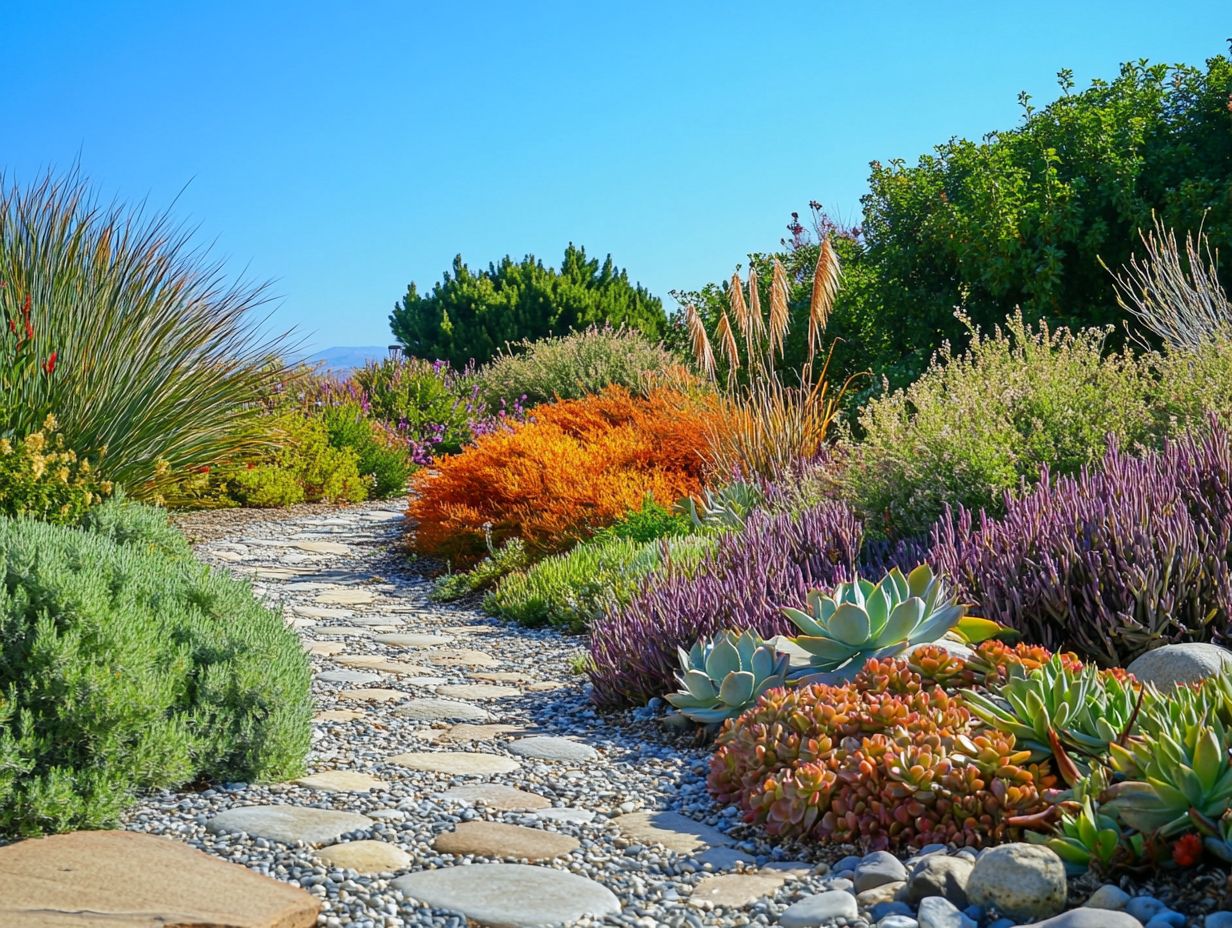
To keep your drought-resistant landscape thriving, add mulch, improve soil with organic amendments, and use strategic irrigation systems that conserve moisture and prevent soil erosion.
Elevate your landscape by choosing native plants. These plants need less water and are well-suited to your local climate. This choice not only saves water but also supports local ecosystems and benefits pollinators.
Install drip irrigation systems to efficiently water the roots of your plants, reducing evaporation and runoff. Regularly test and enrich your soil with organic matter to improve water retention, ensuring your plants stay hydrated during dry spells.
By integrating techniques like appropriate plant density and careful plant selection, you can create a resilient landscape that conserves resources and flourishes in beauty.
Common Mistakes to Avoid in Drought-Resistant Landscaping
Avoiding common mistakes in drought-resistant landscaping is essential for making your garden effective and managing water wisely. By steering clear of improper irrigation methods, selecting unsuitable plants, and neglecting soil erosion, you can save resources and ensure your landscape thrives.
What Not to Do When Creating a Drought-Resistant Landscape
When creating a drought-resistant landscape, avoid critical mistakes like over-watering, choosing non-drought-tolerant plants, and neglecting maintenance. These errors can harm your efforts and lead to weak root systems.
One common pitfall is the urge to over-water, which can cause root rot and undermine your drought-tolerant goals. Choosing the wrong plants those not suited for arid conditions can waste your resources and result in an underperforming landscape.
Maintaining a regular upkeep routine is also vital. An untidy yard can attract invasive species that thrive in dry soil. By focusing on these details, you can create a thriving environment that flourishes even with limited water.
Frequently Asked Questions
Drought-Resistant Landscaping: A Beginner s Guide
Drought-resistant landscaping is the practice of designing and maintaining outdoor spaces with plants and materials that require minimal water. For beginners, exploring the top 10 drought-resistant plants can save time, money, and resources while still creating beautiful outdoor areas.
Best Plants for Drought-Resistant Landscaping
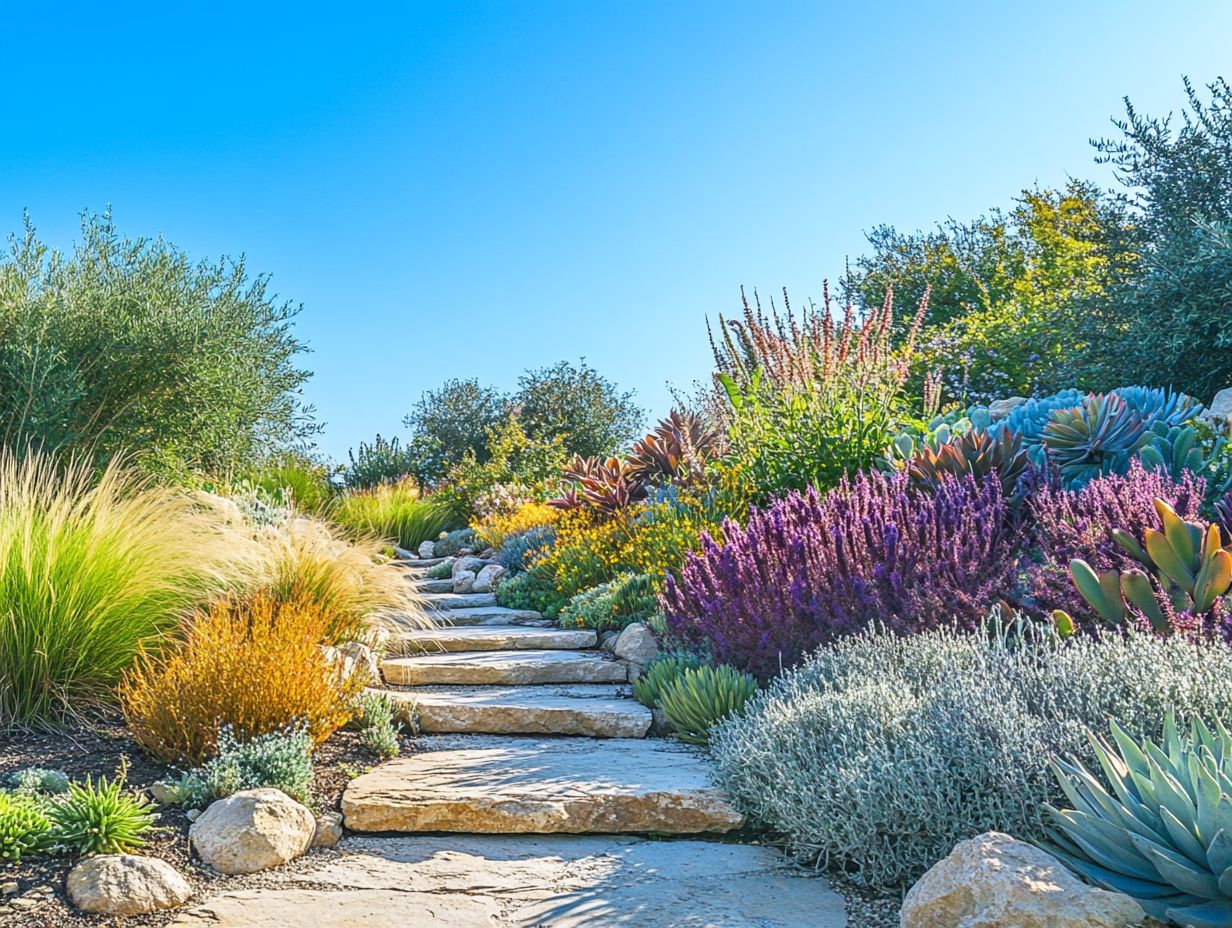
Native plants that adapt well to local climate and soil conditions are ideal for drought-resistant landscaping. For more ideas, consider exploring innovative techniques for drought landscaping, which include options like succulents, cacti, and Mediterranean plants, all of which are naturally drought-tolerant.
Tips for Designing a Drought-Resistant Landscape
When designing a drought-resistant landscape, use a variety of plant heights and textures. To learn more about effective strategies, check out how to get started with drought-resistant gardening, group plants with similar watering needs together, and incorporate hardscaping elements like gravel or rocks to reduce watering requirements.
Reducing Water Usage in Your Drought-Resistant Landscape
To reduce water usage, utilize drip irrigation systems instead of sprinklers. These systems deliver water directly to plant roots, minimizing evaporation and runoff. Additionally, incorporate mulch around plants to help retain soil moisture.
Are there any special maintenance requirements for a drought-resistant landscape?
Drought-resistant landscapes require less maintenance than traditional ones. However, they still need attention.
Regularly check for pests and weeds. Pruning and fertilizing as needed will keep your plants healthy.
It’s vital to monitor soil moisture and adjust watering accordingly. This ensures your plants thrive.
Can I still have a beautiful landscape with drought-resistant plants?
Absolutely! Drought-resistant plants come in many colors, shapes, and sizes.
You can create a stunning, visually appealing landscape. Many of these plants have unique features that add character to your outdoor space, making it truly special!

